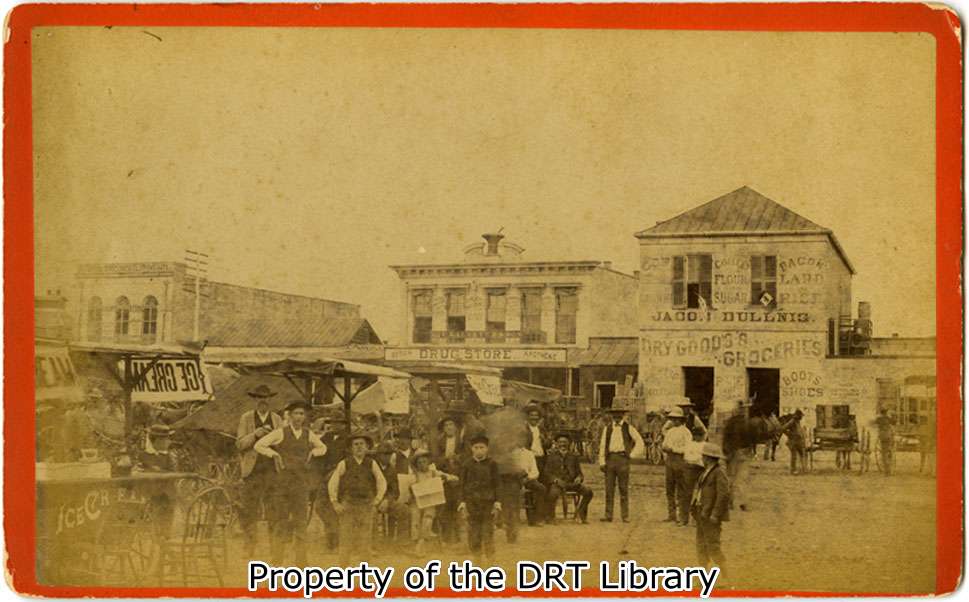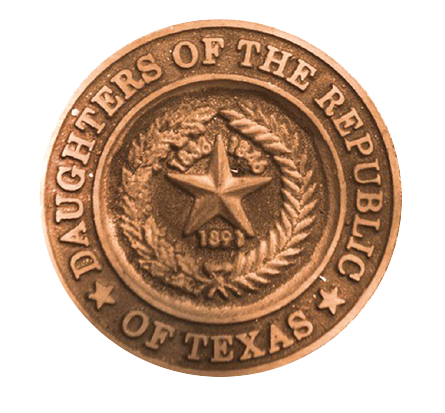
The Beginning
The Daughters of the Republic of Texas (DRT) was founded in 1891 as an organization dedicated to perpetuating the memory of the founding families and soldiers of the Republic who helped achieve and build upon the independence of Texas. The organization continues to pursue its mission by encouraging research into the rich history of the Republic and state of Texas.
DRT Library – Alamo Research Center
After raising private funds to build it, in October of 1950 the Daughters of the Republic of Texas established the DRT Library to house the earliest pieces of its Texas history collection. Over the decades, the Daughters have grown and preserved the collection, receiving praise for the management of the library from those who have used it. Today the collection includes more than 38,000 separate items, including books, maps, and other artifacts associated with the history of the Republic and state of Texas, the city of San Antonio and Bexar County.
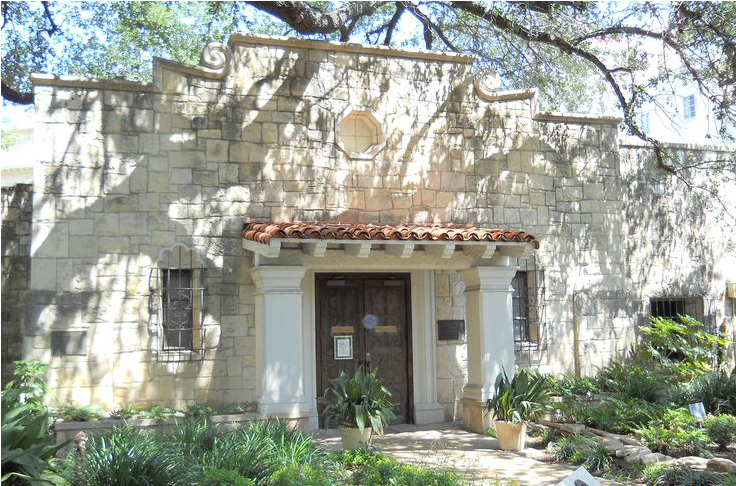
Map Drawn by Stephen F. Austin
circa 1828
This is an early example of one of Stephen F. Austin’s hand-drawn Texas maps. The map was part of the papers of the Cumings family, who were among the first group of settlers in Austin’s colony. The map was donated to the Daughters of the Republic of Texas by the Cumings family.
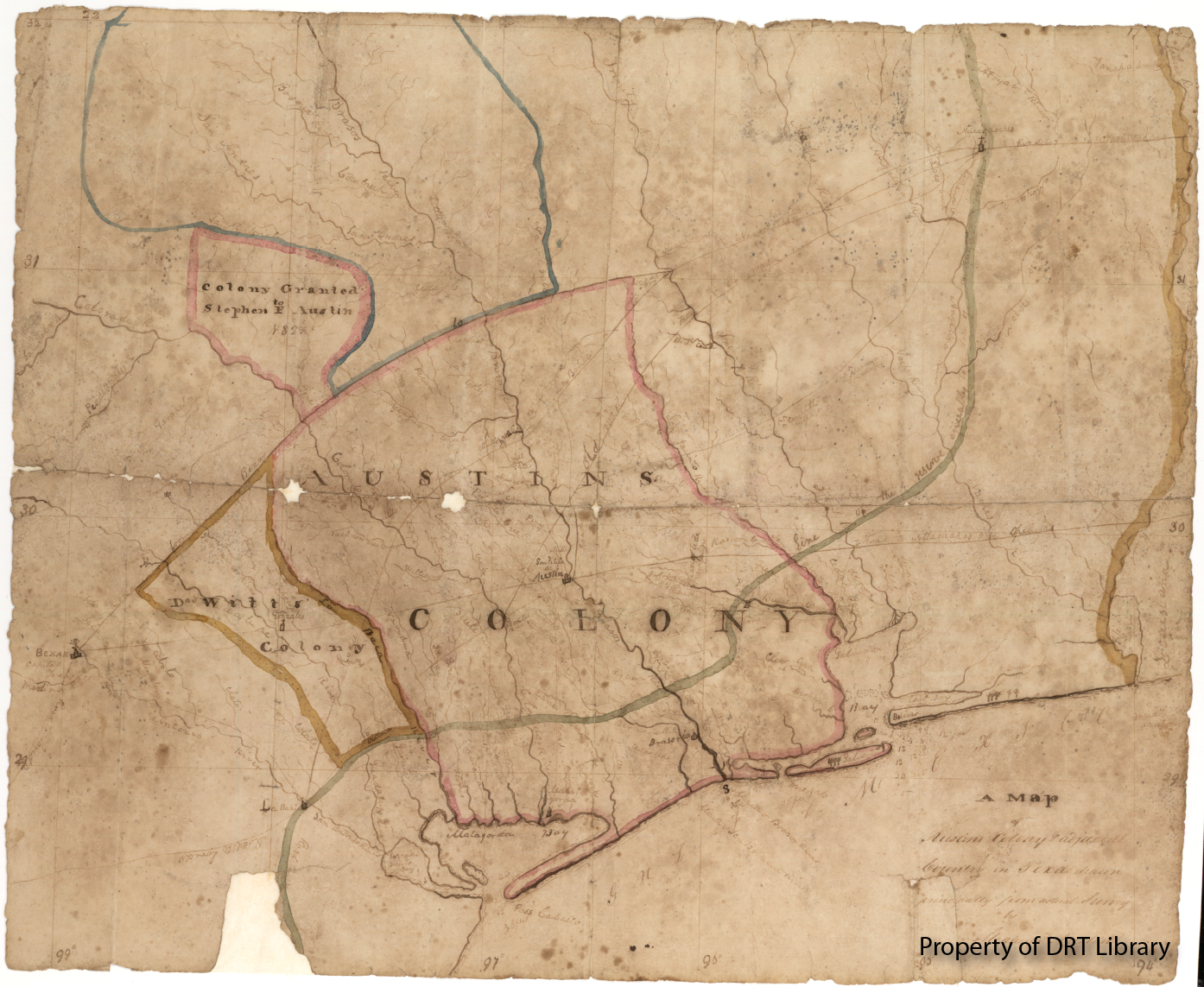
Alamo Church and Plaza
circa 1858
This is the DRT Library’s earliest original photograph of the Alamo. In the 1850s, the Alamo was under the control of the United States military. While the Alamo functioned as their quartermaster depot, the Army added the A-frame roof and the now-iconic “humps” of the façade.
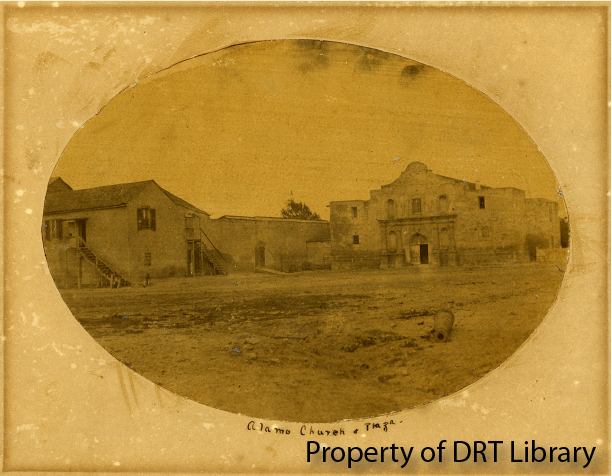
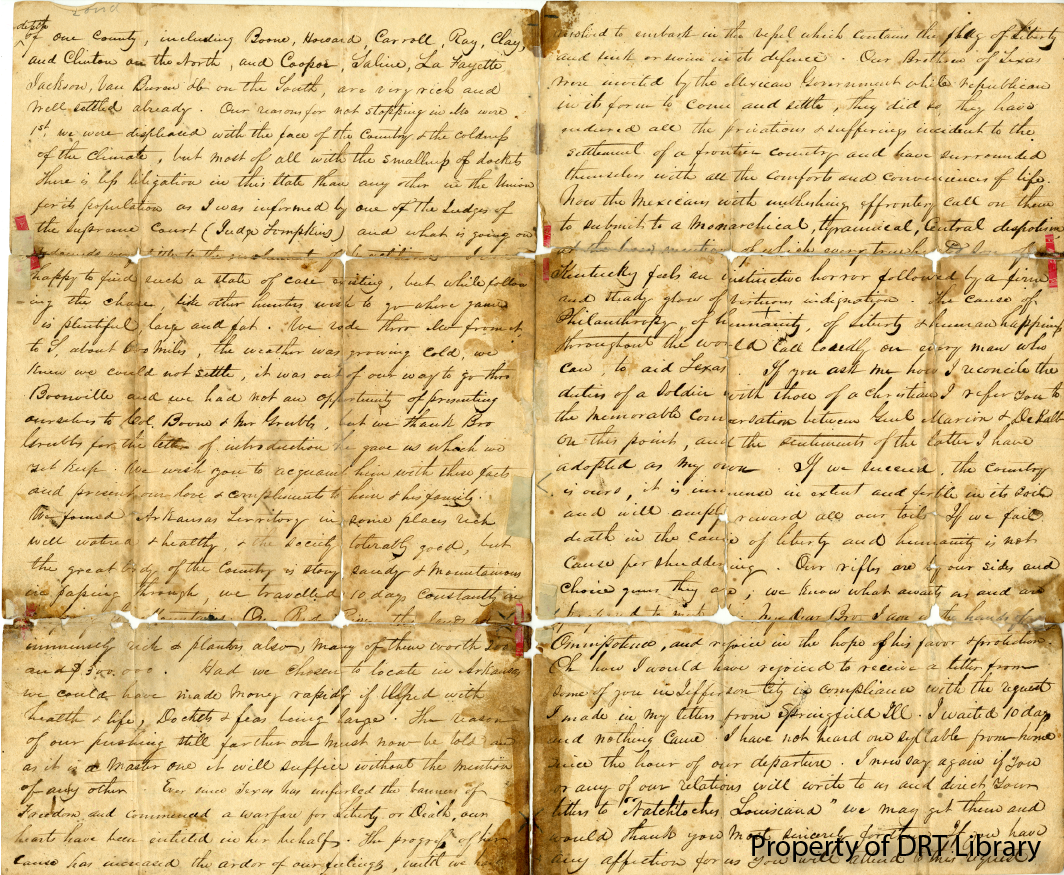
Letter from Alamo Soldier Daniel Cloud
Dec. 26, 1835
Seeking greater opportunities, young lawyer Daniel W. Cloud was caught up in the news of the independence movement in Texas. After traveling from Illinois to Louisiana, Cloud told his brother of his plans to cross the Sabine River and aid the Texan cause. Cloud saw as his potential reward a country "immense in extent and fertile in its soil." Joining the garrison at the Alamo in San Antonio, Cloud was killed when it fell to Mexican forces under General Santa Anna on March 6, 1836.
Babe of the Alamo
date unknown
Known as the “babe of the Alamo,” Angelina Dickinson was only fourteen months old when she witnessed the siege and battle of the Alamo from inside the old mission. Her father, artillery captain Almeron Dickinson, was killed during the battle on March 6; Angelina and her mother Susannah survived and were sent to Gonzales to deliver news of the garrison’s fall.
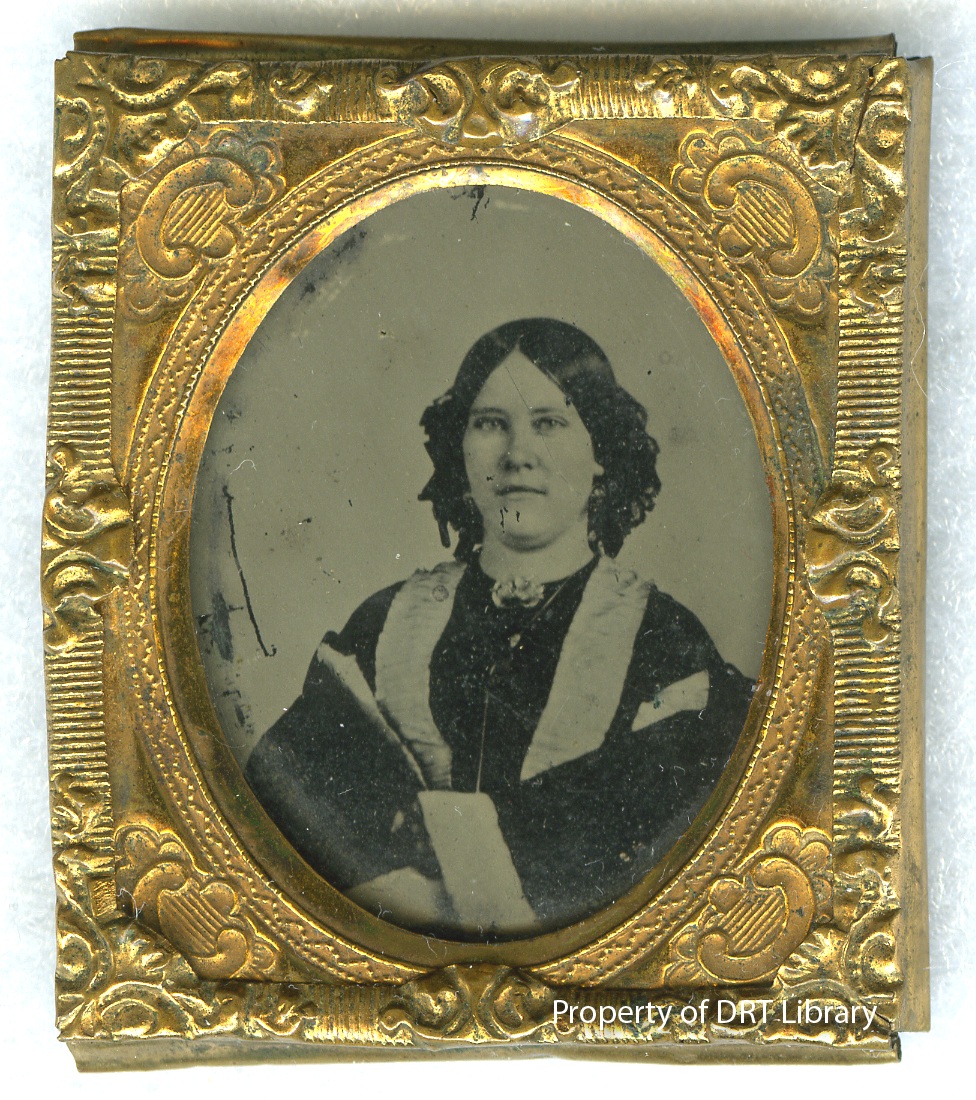
Texas Declaration of Independence
March 2, 1836
On March 3, a copy of the Texas Declaration of Independence was sent to publishers of the Telegraph and Texas Register, with an order to print 1,000 copies in handbill form. Printed hastily, the first one hundred copies, including the one shown here, omitted the names of several representatives. Printing was halted and the problem was corrected for the remainder of the copies. Although moved east in advance of Santa Anna's approaching army, the Telegraph presses were captured by Mexican soldiers in April 1836 and dumped into Buffalo Bayou.
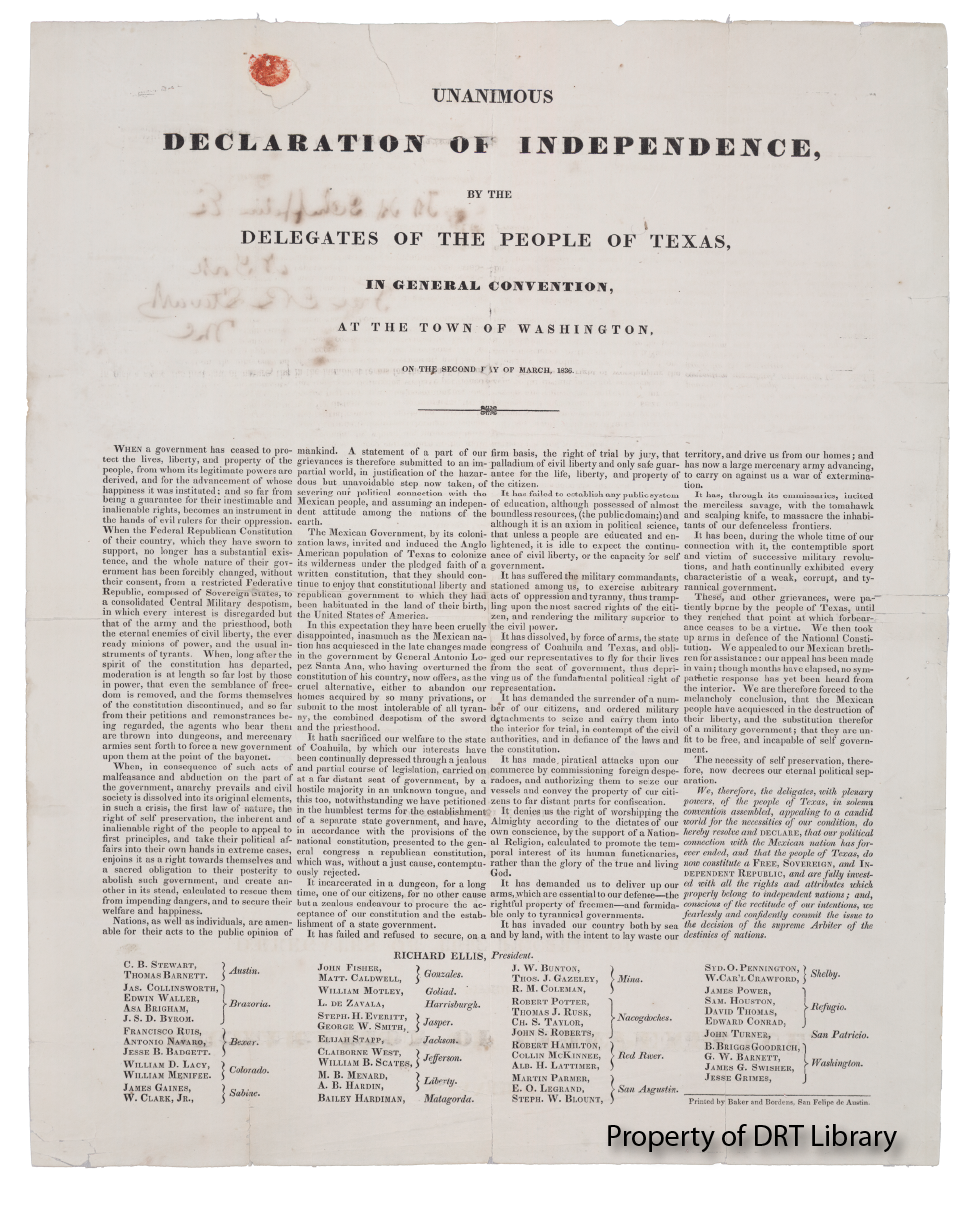
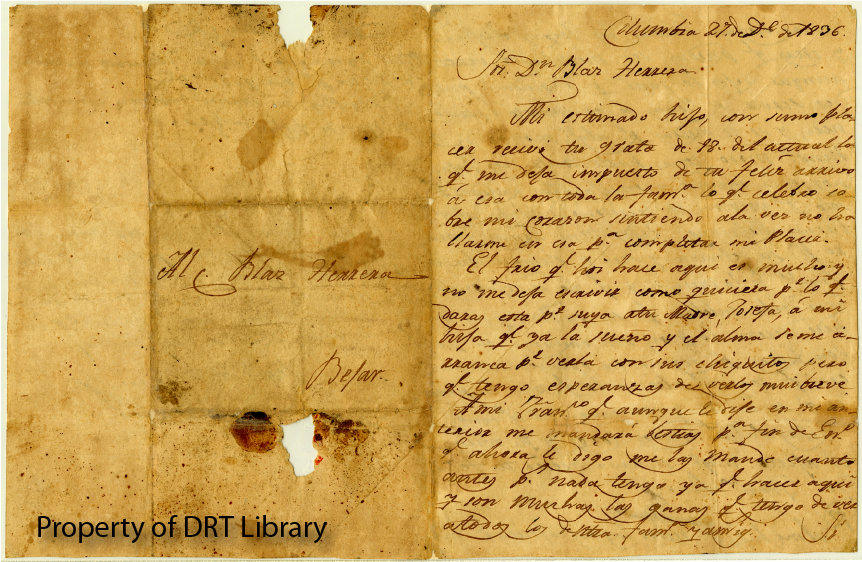
Letter Warning Family Against Remaining in San Antonio
Dec. 27, 1836
In this letter, José Francisco Ruiz, one of two Tejano signers of the Texas Declaration of Independence, warns his son-in-law, Blas Herrera, against the wisdom of remaining in town should the Mexicans return to claim San Antonio.
Republic of Texas "Redback" Currency
circa 1839
The Republic of Texas government began issuing “redbacks,” seen here, by an act of January 19, 1839. These engraved promissory notes were payable to the bearer without interest and printed in denominations of $5, $10, $20, $100, and $500 with change notes of $1, $2, and $3. Initially worth about thirty-seven cents to a U.S. dollar, by 1842 redbacks were virtually worthless due to over-printing and inflation; in some areas of Texas, they had a market value of only two cents on the dollar.
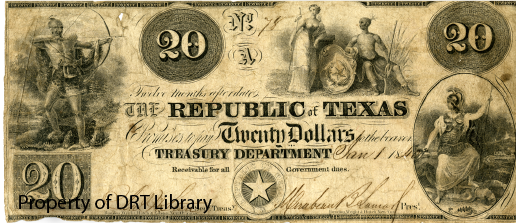
Davy Crockett Almanac Covers
1839, 1840, 1847
David Crockett's mythic image as a frontiersman, established during his lifetime and magnified after his death at the Alamo, was the source for many popular entertainments. The first Crockett Almanac appeared in 1835, with others following regularly under various publishers through 1856. The almanacs contained a variety of practical information along with wildly-embellished or invented tales of Crockett's exploits.
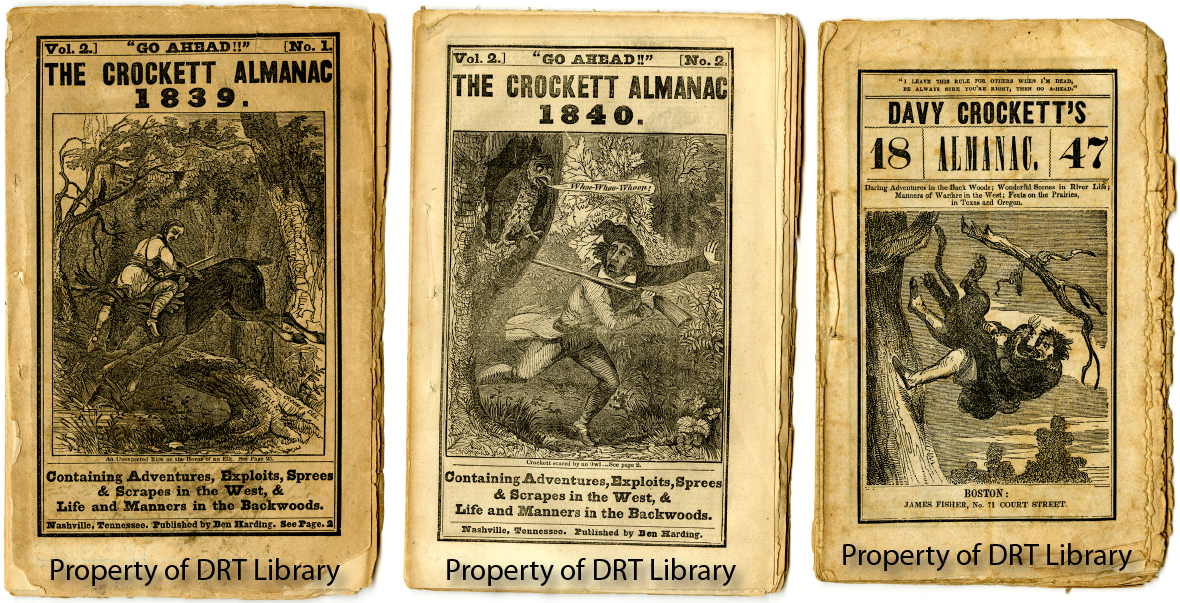
Painting by Early Texas Artist Gentilz
circa 1848
Born in Paris, France, Theodore Gentilz made his way to Texas where he would become one of the founders of Castroville and well-known for his many paintings and drawings that depicted the state’s earliest days. The Spanish Governor’s Palace in San Antonio de Bexár is the scene for this painting entitled Fandango. Gentilz’s genre studies of this period are among his most recognizable works.
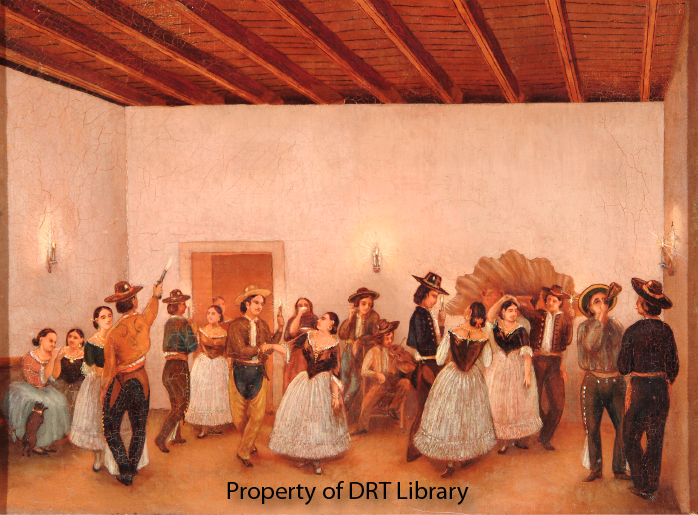
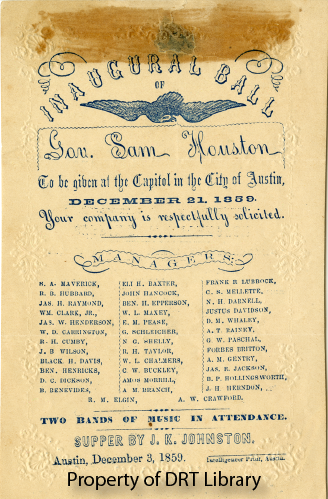
Invitation to Governor-elect Sam Houston's Inaugural Ball
1859
After serving as the first elected president of the Republic of Texas (1836-1838), Sam Houston became the seventh governor of the State of Texas taking office on December 21, 1859. This is an original invitation to Governor-elect Houston’s inaugural ball.
Bonds Issued by Santa Anna to Finance Return to Power
1866
After years of exile, the former Mexican president continued to plot a return to power, hoping that efforts to oust Emperor Maximilian would facilitate his plans. His overly optimistic view of the interest of United States officials and misleading information supplied by co-conspirators led Santa Anna to travel to Washington and New York, where he attempted to finance his schemes by selling bonds secured by his estates in Veracruz, St. Thomas, and Turbaco. His efforts unsuccessful, he went to Mexico, where he was arrested and returned to exile. He was allowed to return in 1874 and died two years later.
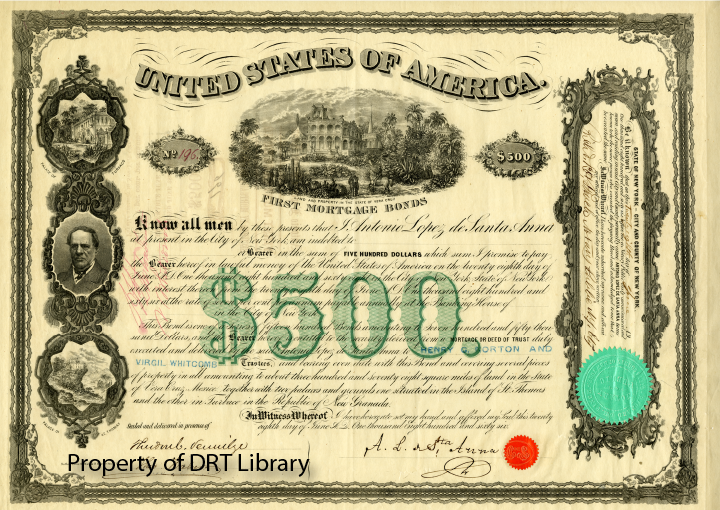
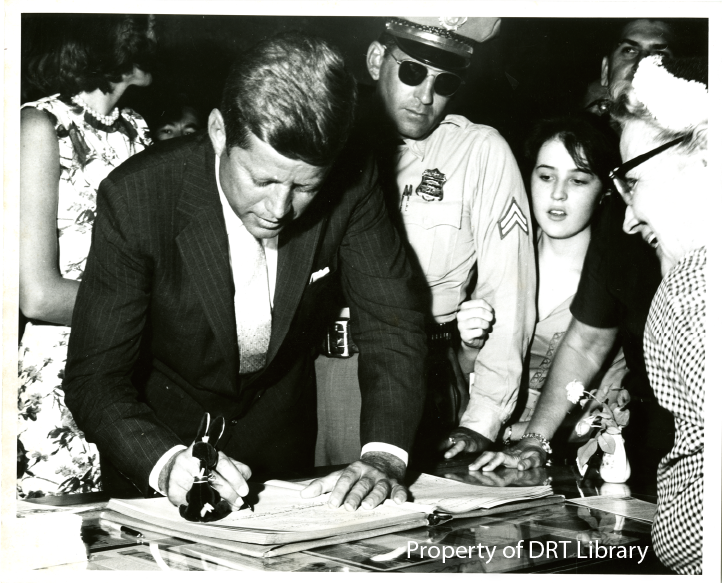
President Kennedy at Alamo
1960
On September 12, 1960, Democratic presidential nominee John F. Kennedy, his running mate Lyndon B. Johnson, and Senator Ralph Yarborough stopped at the Alamo during Kennedy’s campaign. Less than two months later he defeated Republican candidate Richard Nixon. Kennedy later visited San Antonio as president on November 21, 1963, the day before his assassination in Dallas.
Davy Crockett Letter Excerpt in Essex Register
1835
Davy Crockett's lack of results during his first three terms as a U.S. Congressman as well as his vehement opposition to Andrew Jackson cost him the 1835 Congressional election. In response, Crockett declared that he would head for Texas to participate in the rebellion there and take advantage of the possibilities afforded by the amount of land on offer.
In a portion of his letter printed on the 10th of September, 1835, in the Essex Register (Salem, MA), Crockett declares “I do believe Santa Anna’s Kingdom will be a paradise, compared with this in a few years. The People are nearly ready to take the yoke of bondage…” The full letter appears in a different newspaper, the National Intelligencer. Crockett was so famous, though, that other newspapers through the United States picked up his letter and printed it.
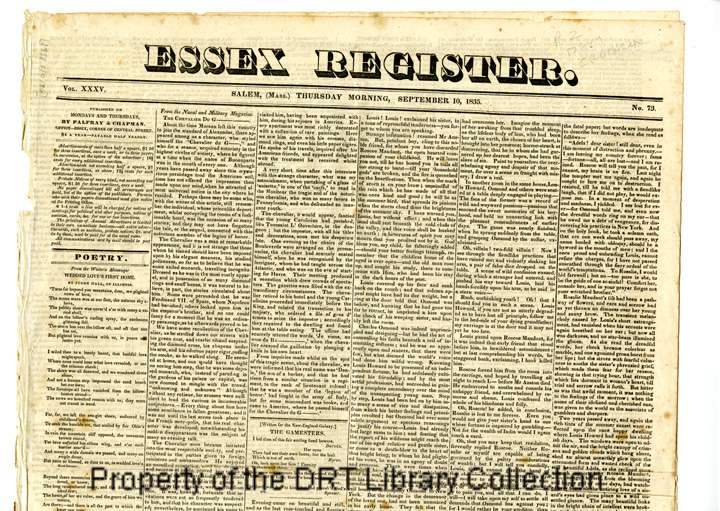

Willie H. Maverick graduates from the University of Virginia
1870
In June of 1870, William H. (Willie) Maverick graduated from the University of Virginia with a Bachelor of Law degree. Willie was the second son of prominent San Antonian Samuel Maverick, one of the signers of the Texas Declaration of Independence. He had to pass rigorous examinations that include questions such as:
State the doctrine in Virginia as to private statutes; the definition of an ex post facto law; the doctrine in Virginia as to Retrospective Laws; the power of the Courts of England and in Virginia severally, to declare a statute void and why; of what the laws of Virginia consisted previous to the Revolution; Sheriff’s civil liability for escapes; and the coroner’s ministerial duties.
![Picture File
People
Driscoll, Clara
Donor: Mrs. L. T. Barrow, 1978
13832
[Clara Driscoll, standing, 3/4 portrait]](http://thetexasstory.com/wp-content/uploads/2015/10/Driscoll.jpg)
Clara Driscoll, "Savior of the Alamo"
1905
Clara Driscoll, the “Savior of the Alamo,” was the philanthropist and Daughter of the Republic of Texas who provided the money to buy the Alamo for the State of Texas when this historic landmark was threatened with demise in 1905.
In 1903, Adina Emilia De Zavala enlisted Clara Driscoll to join the Daughters of the Republic of Texas and chair the De Zavala fundraising committee to negotiate the purchase of the long barracks that was owned by wholesale grocers Charles Hugo, Gustav Schmeltzer and William Heuermann. The asking price was $75,000, most of which came out of Clara Driscoll's bank account. On January 26, 1905, the state legislature approved, and Governor S.W.T Lanham signed legislation for state funding to preserve the Alamo property. The state reimbursed Clara Driscoll and, on October 4, 1905, the governor formally conveyed the Alamo property, including the convento and the mission church, to the Daughters of the Republic of Texas.
Ice Cream Stands in Military Plaza
circa 1890
San Antonio’s Military Plaza was established in 1722. At that time, it served as a parade ground and market square for soldiers stationed at San Antonio de Béxar Presidio, the center of Spanish defense in western Texas. Like the adjacent Main Plaza, Military Plaza was surrounded by small residences during the early 1800s. After the Civil War, these buildings were replaced by commercial and government structures. The Plaza was ringed by businesses, saloons, and gambling houses, examples of which can be seen in the background of the photograph shown here. The center of the Plaza was crowded with vendors, chili stands, wagon trains, and markets. Additionally, San Antonio was a regional transportation center during the 1800s, and Military Plaza was its hub until the arrival of the railroad in 1877. San Antonio City Hall was built in the middle of the Plaza in 1891.
